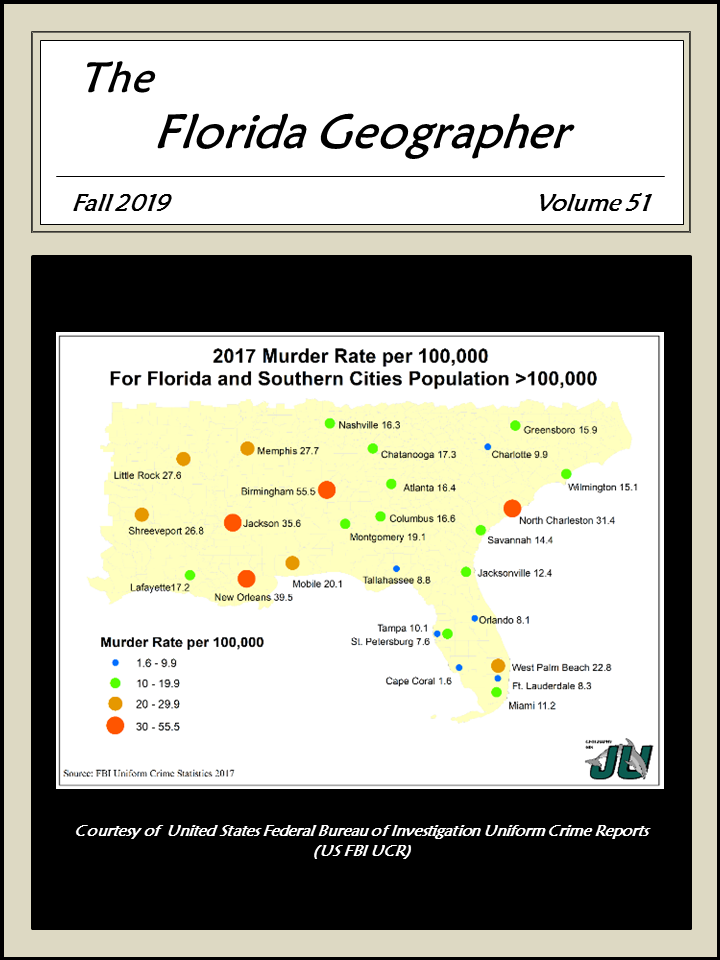Geovisualization of Florida Land Use using Bivariate Mappting, Statistical Legends, and Visual Analytics
Abstract
The concepts of land use and land cover convey information about a landscape. Although land use and land cover are different concepts, the terms have become intermingled and often used interchangeably in GIScience, resulting in a simplified one-to-one relationship that can be visualized using univariate mapping techniques. This research posits that the relationships between land use and land cover are complex, many-to-many relationships, and can be represented bivariately.
Land cover is determined by the direct observation of the earth's surface, resulting in categories such as forest, wetland, and development. Land use by contrast is a socioeconomic interpretation of the activities that take place on that surface, with categories such as residential, commercial, and agricultural. Complications arise when these categories overlap. For example, a forested area can be used for recreation, grazing, or timber production. A residential area can be located within a forest, a grazing plain, or a developed area. A bivariate representation can be useful in conveying these overlapping categories. The research described in this article demonstrates complex interactions between land use and land cover in Florida.
Land use data were obtained from the 2014 Florida Department of Revenue database and land cover data from the 2010 National Land Cover database. The resulting geovisualization consists of three parts: 1. A bivariate map using color theory and symbology based on Gestalt principles to represent and differentiate the two data sources; 2. A two-dimensional statistical legend to inform the data combinations and data distributions; 3. Visual analytics using Sankey (flow) diagrams to show the relationships and frequencies of categorical data interactions. This combination of visuals advances cartography and GIScience and gives new perspectives to the many-to-many relationships between land use and land cover.

